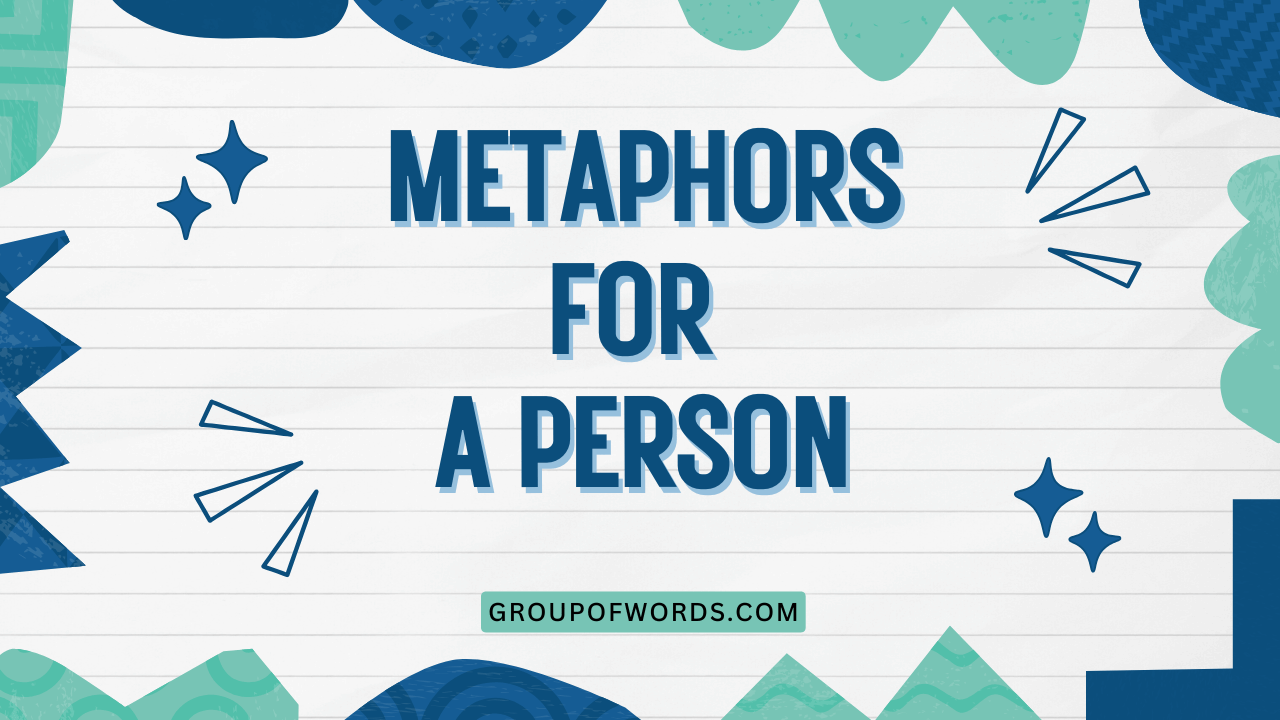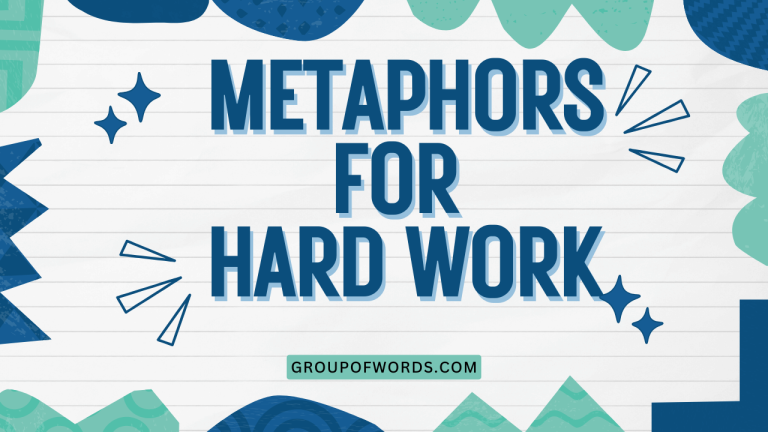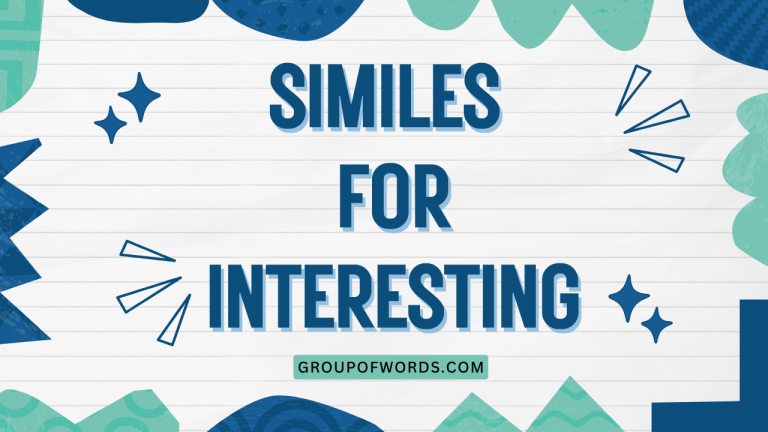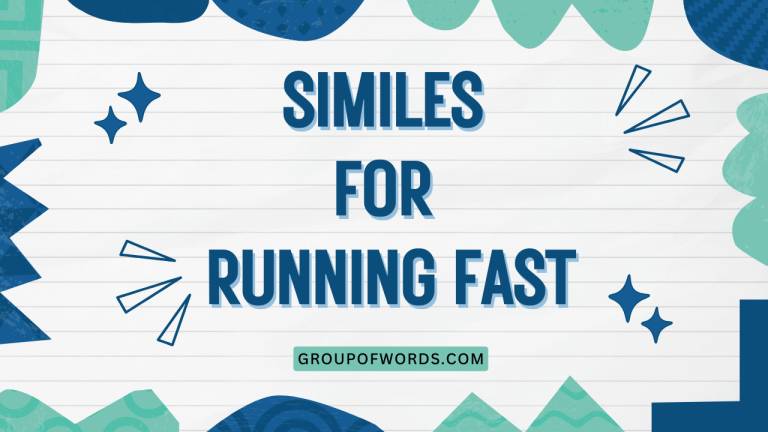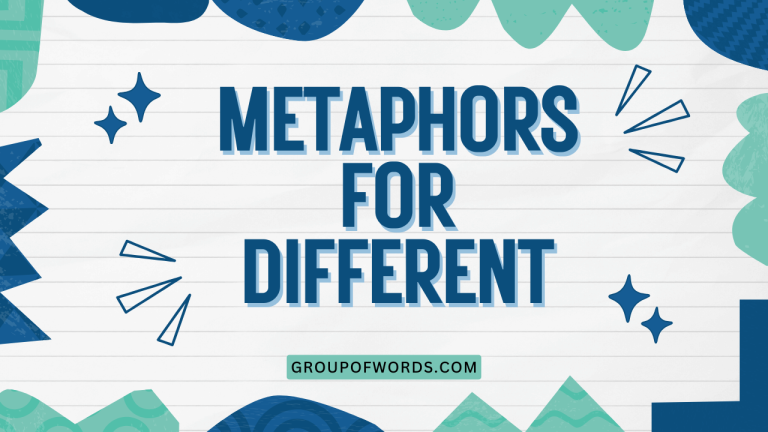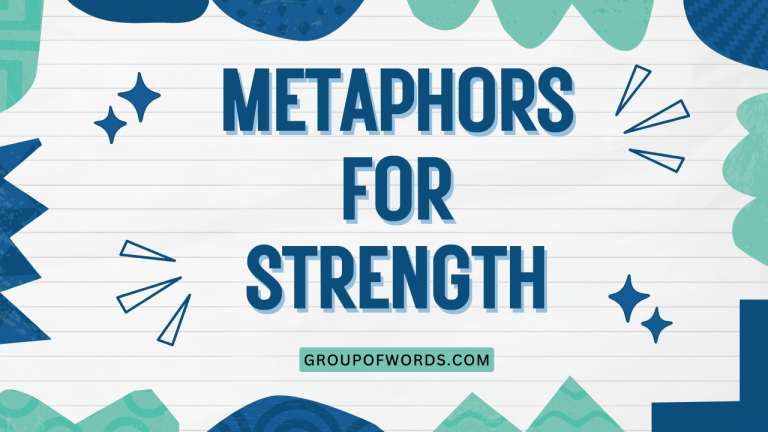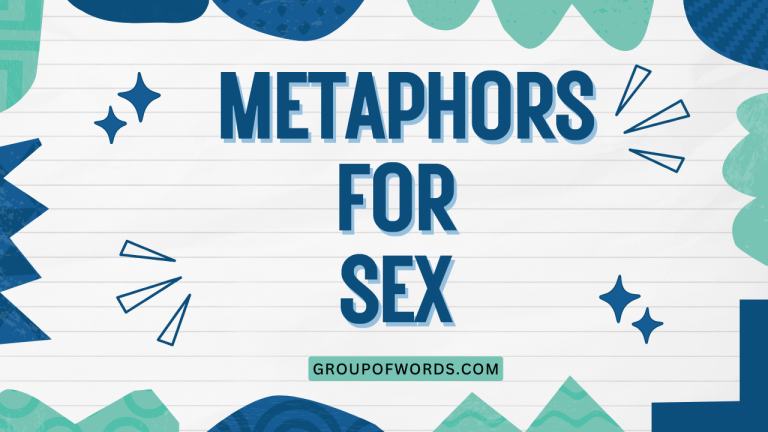Metaphors for a Person: A Comprehensive Guide
Metaphors are powerful tools in the English language, allowing us to describe complex ideas and emotions in vivid and relatable ways. When applied to people, metaphors can reveal hidden aspects of their character, personality, or situation.
Understanding these metaphors not only enhances your comprehension of literature and everyday conversation but also enriches your ability to express yourself more creatively and effectively. This article provides a comprehensive exploration of metaphors for a person, covering their definition, structure, types, usage rules, common mistakes, and practical exercises.
Whether you are an English language learner or a seasoned writer, this guide will help you master the art of using metaphors to describe people.
Table of Contents
- Definition of Metaphor for a Person
- Structural Breakdown of Metaphors
- Types and Categories of Metaphors for a Person
- Examples of Metaphors for a Person
- Usage Rules for Metaphors
- Common Mistakes with Metaphors
- Practice Exercises
- Advanced Topics in Metaphor Usage
- Frequently Asked Questions
- Conclusion
Definition of Metaphor for a Person
A metaphor is a figure of speech that directly compares two unlike things without using “like” or “as.” It asserts that one thing is another, creating a connection based on shared characteristics. When used to describe a person, a metaphor transfers qualities from one entity to the person, highlighting certain aspects of their personality, behavior, or situation. The power of a metaphor lies in its ability to evoke vivid imagery and deeper understanding through implicit comparison.
Metaphors are not literal; they are figurative. Their purpose is to add color, depth, and emotion to language.
By using metaphors, we can express complex ideas in a concise and memorable way. In the context of describing people, metaphors offer a way to go beyond simple adjectives and paint a richer, more nuanced portrait.
For instance, saying “He is a lion in battle” doesn’t mean the person is literally a lion. Instead, it implies that he is brave, strong, and fierce, like a lion.
The effectiveness of a metaphor depends on the audience’s understanding of the shared characteristics between the two compared entities. The more universally understood the comparison, the more impactful the metaphor.
Structural Breakdown of Metaphors
A metaphor typically consists of two main elements: the tenor and the vehicle. The tenor is the subject being described (in this case, the person), and the vehicle is the object or concept used to describe the tenor. The connection between the tenor and the vehicle is the shared characteristic or quality, often referred to as the ground.
Let’s break down the metaphor “She is a shining star.”
- Tenor: She (the person being described)
- Vehicle: A shining star (the object used to describe her)
- Ground: Brightness, brilliance, prominence, admired by many
The effectiveness of a metaphor relies on the clear and relevant connection between the tenor and the vehicle. A strong metaphor creates a vivid image in the reader’s mind, allowing them to understand the person being described in a new and insightful way.
The ground, or the shared characteristic, must be easily recognizable to ensure the metaphor resonates with the audience.
Consider the metaphor “He is a rock.” Here, the tenor is “he,” the person, and the vehicle is “a rock.” The ground could be interpreted as stability, strength, or unyieldingness. The metaphor suggests that the person is dependable and resilient, providing a sense of security to those around them.
Types and Categories of Metaphors for a Person
Metaphors for a person can be categorized based on the type of object or concept used as the vehicle. Here are some common categories:
Animal Metaphors
Animal metaphors draw parallels between a person’s traits and the characteristics associated with specific animals. These metaphors can highlight qualities like strength, cunning, loyalty, or aggression.
The choice of animal often depends on the specific trait the speaker wants to emphasize.
Nature Metaphors
Nature metaphors use elements of the natural world, such as plants, weather, or landscapes, to describe a person. These metaphors can evoke a sense of beauty, resilience, or tranquility.
They often reflect the person’s inner state or their impact on others.
Object Metaphors
Object metaphors compare a person to inanimate objects, highlighting qualities like durability, usefulness, or precision. These metaphors can emphasize the person’s role, their impact on society, or their internal characteristics.
Food Metaphors
Food metaphors describe a person using different types of food, often reflecting their personality, appeal, or the way they make others feel. These metaphors can be playful or insightful, depending on the context and the specific food chosen.
Color Metaphors
Color metaphors use colors to represent a person’s mood, personality, or the atmosphere they create. These metaphors rely on the symbolic associations of different colors, such as red for passion, blue for calmness, or green for growth.
Examples of Metaphors for a Person
The following sections provide extensive examples of metaphors for a person, categorized by type. Each example illustrates how a specific metaphor can be used to describe different aspects of a person’s character or situation.
Animal Metaphor Examples
Animal metaphors are a common and powerful way to describe people. The following table provides numerous examples, showcasing the diverse range of qualities that can be conveyed through this type of metaphor.
| Metaphor | Meaning |
|---|---|
| He is a lion. | He is brave, strong, and courageous. |
| She is a fox. | She is cunning and clever. |
| He is a bear. | He is grumpy and easily irritated. |
| She is a dove. | She is peaceful and gentle. |
| He is a wolf in sheep’s clothing. | He appears harmless but is actually dangerous. |
| She is a busy bee. | She is hardworking and diligent. |
| He is a stubborn mule. | He is inflexible and unwilling to change his mind. |
| She is a graceful swan. | She is elegant and poised. |
| He is a sly snake. | He is deceitful and untrustworthy. |
| She is a loyal dog. | She is faithful and devoted. |
| He’s a real shark in the business world. | He is ruthless and aggressive in business. |
| She’s a night owl. | She prefers to be awake and active during the night. |
| He is a sitting duck. | He is vulnerable and an easy target. |
| She is a scaredy cat. | She is easily frightened. |
| He is a lone wolf. | He prefers to be alone and independent. |
| She is a social butterfly. | She is outgoing and enjoys socializing. |
| He is a top dog. | He is in a position of power and authority. |
| She is a dragon lady. | She is a strong, assertive, and sometimes intimidating woman. |
| He’s like a hawk, always watching. | He is observant and vigilant. |
| She sings like a lark. | She has a beautiful and melodious singing voice. |
| He is a caged bird. | He feels trapped and restricted. |
| She is a queen bee. | She is the leader of a social group. |
| He is a pack rat. | He hoards unnecessary items. |
| She is a guinea pig for new projects. | She is used as a test subject for new initiatives. |
| He is a workhorse. | He is a tireless and dedicated worker. |
Nature Metaphor Examples
Nature metaphors offer a poetic way to describe individuals, drawing on the beauty and symbolism inherent in the natural world. The subsequent table illustrates how various elements of nature can be used to portray different facets of a person.
| Metaphor | Meaning |
|---|---|
| He is a towering oak. | He is strong, reliable, and provides shelter. |
| She is a blooming flower. | She is beautiful, vibrant, and full of life. |
| He is a raging storm. | He is filled with intense anger or emotion. |
| She is a gentle breeze. | She is calming and refreshing. |
| He is a deep ocean. | He is mysterious and complex. |
| She is a ray of sunshine. | She is cheerful and brings joy to others. |
| He is a barren desert. | He is emotionally empty and unfulfilling. |
| She is a lush forest. | She is abundant with life and energy. |
| He is a solid rock. | He is dependable and unwavering. |
| She is a sparkling stream. | She is lively and refreshing. |
| He is a dormant volcano. | He has suppressed anger that could erupt at any moment. |
| She is a guiding star. | She provides direction and inspiration. |
| He is a winding river. | He has a complex and unpredictable path in life. |
| She is a fragile leaf. | She is delicate and vulnerable. |
| He is a rough mountain. | He is unyielding and challenging. |
| She is a tranquil lake. | She is peaceful and serene. |
| He is a dark cloud. | He brings negativity and gloom. |
| She is a budding rose. | She is developing her potential and beauty. |
| He is an unyielding mountain. | He is steadfast and cannot be moved. |
| She is a field of wildflowers. | She is diverse and naturally beautiful. |
| He is a mighty glacier. | He is slow to change but immensely powerful. |
| She is a clear spring. | She is pure and refreshing. |
| He is a desert mirage. | He is deceptive and not what he seems. |
| She is the calm after the storm. | She brings peace and tranquility after chaos. |
| He is a steady rain. | He is consistent and reliable. |
Object Metaphor Examples
Object metaphors offer a unique perspective, comparing people to inanimate objects to highlight specific qualities or roles. The following table presents a variety of object metaphors, illustrating their versatility in describing human characteristics.
| Metaphor | Meaning |
|---|---|
| He is a well-oiled machine. | He is efficient and works perfectly. |
| She is a sharp knife. | She is intelligent and perceptive. |
| He is a broken record. | He repeats himself constantly. |
| She is a shining beacon. | She is a source of hope and guidance. |
| He is a ticking time bomb. | He is about to explode with anger or frustration. |
| She is a sturdy bridge. | She connects people and facilitates understanding. |
| He is a blank canvas. | He has unlimited potential and possibilities. |
| She is a fine-tuned instrument. | She is highly skilled and precise. |
| He is a rusty cog. | He is outdated and inefficient. |
| She is a guiding light. | She provides direction and inspiration. |
| He is a safety net. | He provides support and protection. |
| She is a complex puzzle. | She is difficult to understand. |
| He is a sturdy anchor. | He is stable and reliable. |
| She is a delicate vase. | She is fragile and needs to be handled with care. |
| He is a strong wall. | He is protective and unyielding. |
| She is a valuable gem. | She is precious and irreplaceable. |
| He is a loose cannon. | He is unpredictable and dangerous. |
| She is a warm blanket. | She provides comfort and security. |
| He is a compass, always pointing true north. | He is reliable and always knows the right direction. |
| She is a mirror, reflecting the best in others. | She brings out the positive qualities in those around her. |
| He is a shadow, always lurking. | He is mysterious and possibly sinister. |
| She is a magnet, attracting people with her charm. | She is captivating and draws others to her. |
| He is a vending machine, dispensing advice on demand. | He readily offers advice when asked. |
| She is a switch, turning on the energy in the room. | She energizes and invigorates her surroundings. |
| He is a barometer, sensing the mood of the crowd. | He is perceptive and attuned to the emotions of others. |
Food Metaphor Examples
Food metaphors can add a flavorful and relatable dimension to describing people. The table below presents a variety of food-related metaphors, illustrating how they can be used to convey different personalities and characteristics.
| Metaphor | Meaning |
|---|---|
| He is a tough nut to crack. | He is difficult to understand or deal with. |
| She is a sweet as pie. | She is kind and pleasant. |
| He is full of baloney. | He is talking nonsense. |
| She is a hot potato. | She is a controversial topic or person. |
| He is a couch potato. | He is lazy and spends a lot of time watching TV. |
| She is the apple of his eye. | She is someone he cherishes deeply. |
| He is a cream puff. | He is weak and easily defeated. |
| She is a cupcake. | She is sweet and adorable. |
| He is a lemon. | He is defective or unreliable. |
| She is a peach. | She is delightful and agreeable. |
| He is a sour grape. | He is bitter and resentful. |
| She is a tough cookie. | She is resilient and strong-willed. |
| He is a fruitcake. | He is eccentric or crazy. |
| She is a sugar plum. | She is sweet and delightful. |
| He is a hard pill to swallow. | He is difficult to accept. |
| She is a bowl of cherries. | She is a pleasurable and enjoyable experience. |
| He is a loaf. | He is lazy and unproductive. |
| She is a spice of life. | She adds excitement and interest to life. |
| He is a walking buffet of knowledge. | He is extremely knowledgeable about many subjects. |
| She is the salt of the earth. | She is honest, reliable, and unpretentious. |
| He is a cold fish. | He is unemotional and aloof. |
| She is a recipe for disaster. | She is bound to cause problems. |
| He is a real egghead. | He is highly intelligent and academic. |
| She is a sweet potato – good for the soul. | She is comforting and nourishing. |
| He is a walking talking fortune cookie. | He always has wise or insightful things to say. |
Color Metaphor Examples
Color metaphors use the symbolic associations of different colors to describe a person’s character, mood, or impact. The following table provides examples of how colors can be used metaphorically to paint a vivid picture of an individual.
| Metaphor | Meaning |
|---|---|
| He is feeling blue. | He is sad or depressed. |
| She is green with envy. | She is jealous. |
| He saw red. | He became very angry. |
| She has a golden heart. | She is kind and generous. |
| He is a gray character. | He is morally ambiguous. |
| She is a silver lining. | She is a positive aspect in a negative situation. |
| He is a black sheep. | He is the odd one out in a group or family. |
| She is a white knight. | She is a rescuer or protector. |
| He is a purple prose writer. | He uses overly ornate and extravagant language. |
| She is a red flag. | She is a warning sign. |
| He is a true-blue friend. | He is a loyal and reliable friend. |
| She is a scarlet woman. | She is a woman considered immoral or promiscuous. |
| He is a yellow-bellied coward. | He is a coward. |
| She is a rosy picture. | She presents an optimistic and favorable view. |
| He is a man of many shades. | He has a complex and multifaceted personality. |
| She is a splash of color in a drab world. | She brings vibrancy and excitement to her surroundings. |
| He is painting the town red. | He is celebrating and having a wild time. |
| She is a rainbow after the rain. | She brings hope and beauty after a difficult time. |
| He is a clear, white soul. | He is pure and innocent. |
| She is a dark, brooding presence. | She is mysterious and somewhat ominous. |
| He is a golden opportunity. | He represents a valuable and advantageous chance. |
| She is a red-hot talent. | She is extremely talented and in high demand. |
| He is a bright spark. | He is intelligent and lively. |
| She is always wearing rose-colored glasses. | She is overly optimistic and unrealistic. |
| He is a black hole of negativity. | He absorbs all the joy and positivity around him. |
Usage Rules for Metaphors
Using metaphors effectively requires a good understanding of their underlying principles and some key usage rules. Here are some important guidelines to follow:
- Clarity: Ensure the connection between the tenor and the vehicle is clear and easily understood. Avoid obscure or overly complex metaphors that may confuse the audience.
- Relevance: Choose a vehicle that is relevant to the tenor and accurately reflects the intended meaning. The shared characteristics should be meaningful and appropriate.
- Originality: Strive for originality in your metaphors. Overused or cliché metaphors can lose their impact and make your writing seem uninspired.
- Consistency: Maintain consistency within a metaphor. Avoid mixing metaphors or creating conflicting images.
- Context: Consider the context in which the metaphor is used. The same metaphor can have different meanings depending on the situation.
- Audience: Be mindful of your audience. Choose metaphors that are appropriate for their age, background, and level of understanding.
A good metaphor should enhance understanding and create a vivid image in the reader’s mind. It should add depth and color to your writing, making it more engaging and memorable.
By following these usage rules, you can ensure that your metaphors are effective and impactful.
Common Mistakes with Metaphors
Even experienced writers can make mistakes when using metaphors. Here are some common errors to avoid:
- Mixed Metaphors: Combining two or more incompatible metaphors in the same sentence.
- Incorrect: “He was skating on thin ice and barking up the wrong tree.”
- Correct: “He was skating on thin ice.” or “He was barking up the wrong tree.”
- Cliché Metaphors: Using overused or predictable metaphors that have lost their impact.
- Cliché: “He was as brave as a lion.”
- Better: “He faced the challenge with leonine courage.”
- Inappropriate Metaphors: Using metaphors that are not suitable for the context or audience.
- Inappropriate: Describing a funeral with joyful metaphors.
- Unclear Metaphors: Using metaphors that are too obscure or difficult to understand.
- Unclear: “He was a quantum entanglement of emotions.”
- Better: “His emotions were deeply interconnected and complex.”
By being aware of these common mistakes, you can avoid them in your own writing and use metaphors more effectively. Always review your metaphors to ensure they are clear, relevant, and appropriate for the context.
Practice Exercises
Test your understanding of metaphors for a person with these practice exercises. Identify the metaphor in each sentence and explain its meaning.
| Question | Answer |
|---|---|
| 1. She is a walking encyclopedia. | Metaphor: walking encyclopedia. Meaning: She is extremely knowledgeable. |
| 2. He is a bottomless pit when it comes to money. | Metaphor: bottomless pit. Meaning: He spends a lot of money and is never satisfied. |
| 3. She is a social chameleon. | Metaphor: social chameleon. Meaning: She adapts her behavior to fit in with different social groups. |
| 4. He is a human computer. | Metaphor: human computer. Meaning: He is very intelligent and analytical. |
| 5. She is a human dynamo. | Metaphor: human dynamo. Meaning: She is full of energy and enthusiasm. |
| 6. He is a knight in shining armor. | Metaphor: knight in shining armor. Meaning: He is a rescuer or protector. |
| 7. She is a ray of hope in a dark situation. | Metaphor: ray of hope. Meaning: She brings optimism and positivity. |
| 8. He is a real chatterbox. | Metaphor: chatterbox. Meaning: He talks a lot. |
| 9. She is a drama queen. | Metaphor: drama queen. Meaning: She overreacts to situations and creates unnecessary drama. |
| 10. He is a workaholic. | Metaphor: workaholic. Meaning: He is addicted to work. |
Exercise 2: Create a metaphor for each of the following people, using different categories (animal, nature, object, food, color).
| Person | Your Metaphor |
|---|---|
| A kind and gentle teacher | She is a calming stream, nurturing her students. |
| A strong and determined athlete | He is a powerful engine, driving towards victory. |
| A creative and imaginative artist | She is a kaleidoscope of colors, bringing beauty to the world. |
| A wise and experienced leader | He is an old oak tree, providing shade and guidance. |
| A shy and introverted student | She is a quiet mouse, observing everything around her. |
| A funny and entertaining comedian | He is a box of chocolates, full of sweet surprises. |
| An angry and aggressive person | He is a raging bull, ready to charge. |
| A calm and peaceful individual | She is a still lake, reflecting tranquility. |
| A deceptive and untrustworthy person | He is a snake in the grass, ready to strike. |
| A loyal and devoted friend | She is a sturdy anchor, providing stability and support. |
Advanced Topics in Metaphor Usage
For advanced learners, exploring the nuances of metaphor usage can lead to more sophisticated and impactful writing. Consider these advanced topics:
- Extended Metaphors: Developing a single metaphor throughout an entire piece of writing. This requires careful planning and consistent imagery.
- Submerged Metaphors: Subtle metaphors that are woven into the text without being explicitly stated. These can add depth and complexity to your writing.
- Dead Metaphors: Metaphors that have become so overused that they are no longer recognized as figurative language (e.g., “the leg of a table”). Understanding dead metaphors can help you avoid clichés and create more original expressions.
- Conceptual Metaphors: Understanding how metaphors shape our thinking and perception of the world. This involves exploring the underlying conceptual frameworks that influence our language and thought.
By delving into these advanced topics, you can further refine your understanding of metaphors and use them to create more powerful and meaningful writing. Experiment with different techniques and explore the possibilities of figurative language.
Frequently Asked Questions
Here are some frequently asked questions about metaphors for a person:
- What is the difference between a metaphor and a simile?
A metaphor directly compares two unlike things, stating that one thing is another. A simile, on the other hand, uses “like” or “as” to make a comparison. For example, “He is a lion” is a metaphor, while “He is as brave as a lion” is a simile.
- How can I create original metaphors?
To create original metaphors, try to think outside the box and look for unexpected connections between different things. Brainstorm a list of qualities you want to convey, and then think of objects or concepts that share those qualities. Don’t be afraid to experiment and try different combinations.
- When is it appropriate to use metaphors?
Metaphors are appropriate in a variety of contexts, including literature, poetry, speeches, and everyday conversation. They can be used to add color, depth, and emotion to your writing or speech. However, it’s important to use them judiciously and ensure they are clear and relevant to the audience.
- How do I avoid using cliché metaphors?
To avoid using cliché metaphors, try to be aware of common expressions and look for more original ways to express your ideas. Read widely and pay attention to the language used by other writers. Practice creating your own metaphors and experiment with different combinations of words and images.
- Can metaphors be used in formal writing?
Yes, metaphors can be used in formal writing, but it’s important to use them carefully and ensure they are appropriate for the tone and audience. Avoid overly flowery or extravagant metaphors, and focus on using clear and concise language.
- How do metaphors enhance communication?
Metaphors enhance communication by making abstract concepts more concrete and relatable. They allow us to understand new or complex ideas by relating them to something we already know. This can make communication more engaging, memorable, and persuasive.
- What role does culture play in understanding metaphors?
Culture plays a significant role in understanding metaphors because the associations and meanings attributed to different objects or concepts can vary across cultures. A metaphor that is effective in one culture may be confusing or even offensive in another. It’s important to be aware of cultural differences when using metaphors, especially when communicating with people from different backgrounds.
- How do I analyze the effectiveness of a metaphor?
To analyze the effectiveness of a metaphor, consider its clarity, relevance, originality, and impact. Ask yourself whether the metaphor enhances understanding, creates a vivid image, and adds depth to the writing. Also, consider whether the metaphor is appropriate for the context and audience.
Conclusion
Metaphors for a person are a powerful tool for enhancing communication and adding depth to your writing. By understanding the structure, types, and usage rules of metaphors, you can effectively use them to describe people in vivid and memorable ways.
Avoid common mistakes like mixed metaphors and clichés, and strive for originality and clarity in your expressions. Practice using metaphors in your writing and speech, and explore the advanced topics to further refine your skills.
The ability to use metaphors effectively will not only improve your communication skills but also enrich your understanding of language and the world around you. Keep practicing, and you’ll be amazed at the creative possibilities that metaphors unlock.
